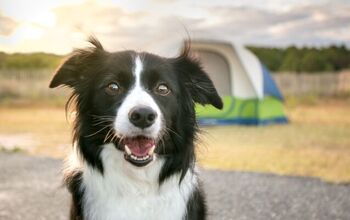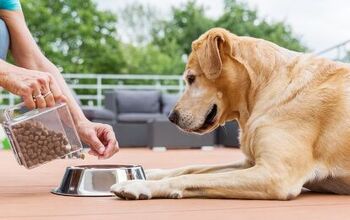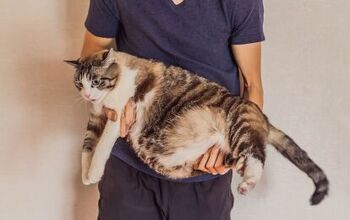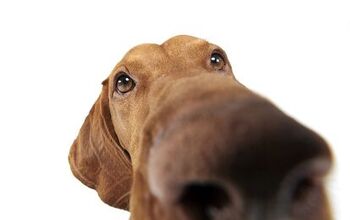Polish Hound


About Polish Hound
Also known as the Ogar Polski, the Polish Hound is a hunting breed indigenous to Poland. With his keen sense of smell, excellent endurance, and intelligence, he is a powerful hunter in the harsh Polish wilderness. Though the breed was developed for hunting and that remains his primary use, these dogs are also gentle and loyal which makes them great pets. They can, however, be somewhat protective and territorial, so plenty of training and socialization is a must.
Also known as the Ogar Polski, the Polish Hound is a hunting breed indigenous to Poland.
The Polish Hound was developed for hunting during the 13th century with some suggesting that the breed arose from a cross between the St. Hubert’s Hound with indigenous Polish dogs. There is also a theory that the breed descended from various German and Austrian breeds. Though its exact origins are unknown, the Polish Hound was clearly developed for its scenting and hunting abilities – the breed was highly valued by Polish hunters for these qualities.
After the Second World War, the breed nearly went extinct, but two colonels took it upon themselves to revive native Polish hunting dogs. Colonel Josef Pawuslewizc developed the Gonczy Polski, a smaller version of the modern Polish Hound. Colonel Piotr Kartwik developed the Ogar Polski, also known as the Polish Hound. The Polish Hound was recognized by the FCI in 1966 but remains practically unknown outside of its homeland.
The Polish Hound is descendant from early Polish hounds predating the Middle Ages.
As a large-breed dog, the Polish Hound should be fed a high-quality dry food formulated for large breeds. Because the breed was developed specifically for hunting, however, he may do well on an active or working breed formula. Just make sure to follow feeding recommendations so he doesn’t grow too quickly as a puppy and so he doesn’t become overweight or obese as an adult.
Polish Hounds are gentle and loyal, which makes them great pets.
The Polish Hound is a large-breed dog, standing between 21.5 and 22.5 inches for females and 22 to 23.5 inches for males. These dogs weigh 55 to 62 pounds at maturity.
Developed as a hunting breed, the Polish Hound is an intelligent and trainable breed but he also has a gentle side. These dogs tend to mature slowly, so they may retain some of their puppy-like tendencies into their second or third year, but they are generally calm and easy to handle in the home. Polish Hounds are affectionate with family and they can also be loyal, sometimes to the point of being protective of both their land and their people. For this reason, the breed often does well as a guard dog. This dog is not, however, inherently aggressive, though some say the breed can be somewhat defensive against intruders while others say he is passive around new people. Individual temperament will vary, so make sure your Polish Hound is properly trained and socialized.
Generally speaking, the Polish Hound is a fairly healthy breed, though the average lifespan is only about 10 to 12 years. No specific medical issues have been identified for the breed, though the Polish Hound may be prone to conditions like hip dysplasia and bloat simply based on his size.
The average lifespan for the Polish Hound is thought to be about 10 to 12 years which is about average for large-breed dogs like this. To maximize your Polish Hound’s lifespan, make sure you feed him a healthy, high-quality diet formulated for large-breed dogs or choose one designed for active breeds.
As a hound breed, the Polish Hound is highly active. These dogs require at least an hour of vigorous exercise each day and will also appreciate having a fenced yard in which to run and play. Training can provide some additional exercise as well.
Polish Hounds are an intelligent and trainable breed.
The Polish Hound is not currently recognized by the AKC but he is recognized by the FCI. The FCI classifies him in Group 6 as a Scenthound.
The Polish Hound has a double coat that is moderate in length and water-resistant. The undercoat is thick and the top coat is longer on the tail and legs while being shorter and softer on the face and ears. Most Polish Hounds have bicolored fur in combinations of black, tan, and red – some also have white markings on the chest, lower legs, and tail.
The average litter size for the Polish Hound breed is unknown but the breed can have fairly large litters, up to 14 puppies. Though the breed grows to be fairly large (especially males), the Polish Hound tends to mature slowly so it might take more than a year for him to real his full size and to grow out of his puppy-like tendencies. To reduce the risk for musculoskeletal issues in adulthood, feed your puppy a large-breed puppy recipe until he reaches 80% of his expected size and then switch to an adult formula.
Photo credit: Capture Light/Shutterstock; Best dog photo/Shutterstock

Kate Barrington is the loving owner of two cats (Bagel and Munchkin) and a noisy herd of guinea pigs. Having grown up with golden retrievers, Kate has a great deal of experience with dogs but labels herself a lover of all pets. Having received a Bachelor's degree in English, Kate has combined her love for pets and her passion for writing to create her own freelance writing business, specializing in the pet niche.
More by Kate Barrington

























